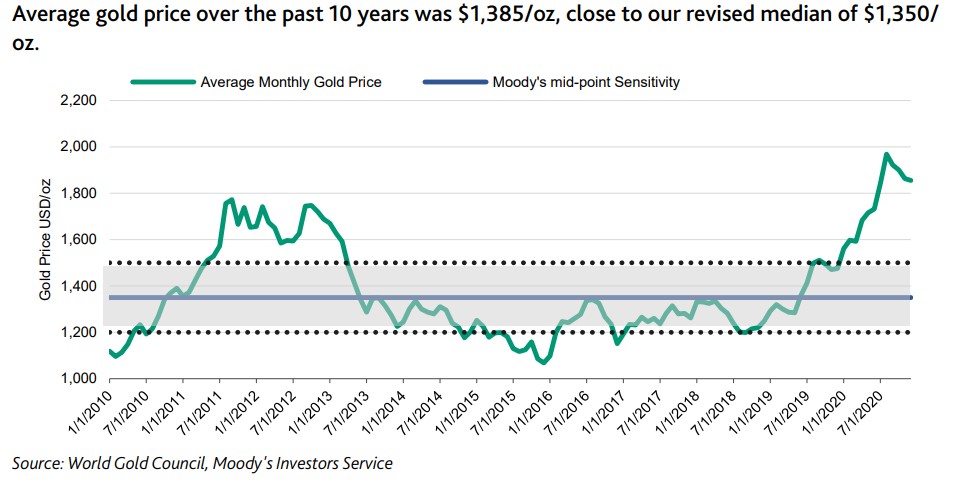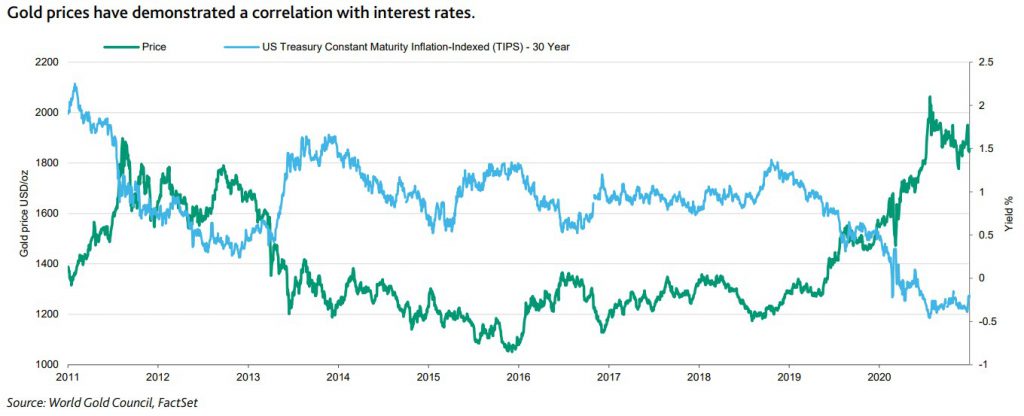Moody’s sees lower rates for several years to support gold price

Gold prices held gains on Thursday after surging during the previous session on hopes for further stimulus under President Joe Biden’s administration.
Spot gold traded 0.4% lower at $1,863.51 per ounce by 11:40 a.m. EST. Meanwhile, US gold futures were down 0.1% at $1,864.40 per ounce on the Comex in New York.
In an earlier report, Moody’s Investor Service raised its so-called price sensitivity range for gold, which the debt ratings agency uses to evaluate credit quality and risk for producers over the next several years.
The new price sensitivity range is pegged at $1,200 to $1,500 per ounce, which represents an 8% increase at the midpoint from the $1,100-1,400 per ounce figure set in February 2020.

This revision was based on factors including lower-for-longer interest rates, expectation of a global economic recovery that will be uneven by country, region and sector, as well as continued political and geopolitical tensions that add to economic uncertainty.
“The revised range incorporates our view that gold does not have the same supply/demand fundamentals as other metals and is largely seen as a safe haven or store of value, fluctuating in response to global macroeconomic factors,” says Moody’s, adding that market sentiment and speculative positioning will keep gold prices volatile as a result.
“Current spot gold prices are above $1,800 per ounce, and we expect prices will remain at or above the top end of our new range through the first half of 2021.”
Lower rates
Supporting the increase to the gold price range is the view that real interest rates across maturities are expected to remain low over the next several years.
Moody’s believes central banks will continue to support market liquidity and financial conditions well into 2021. The banks have already communicated that they will likely keep interest rates low through the next two years and until economic growth recovers, unemployment rates decline and inflation anchors at the target.
Given that the economic recovery will still be incomplete in 2021, and given the persistent long-term disinflationary pressures from technological innovation, the risks of disinflation will be higher in 2021 relative to the risks of inflation overshoot.
This will provide space for interest rates to remain low across both advanced and emerging economies.

See the full report.
More News
Trump planning to stockpile deep-sea minerals to counter China: FT
April 13, 2025 | 07:56 am
Goldman Sachs upgrades gold forecast again to $3,700
April 12, 2025 | 08:05 pm
{{ commodity.name }}
{{ post.title }}
{{ post.date }}




Comments
Sjm5000
These article never discuss the elephant in the room: illegal price manipulation and spoofing to suppress gold price. Gold should be hitting price levels like Bitcoin but god forbid the fixed market allow real price discovery. Like politics, it’s all fiction. Bitcoin is the only real price discovery revealing the trillions of currency debasement. We live in a fantasy but sure, “gold is down .4%” or whatever. Blah blah blah.